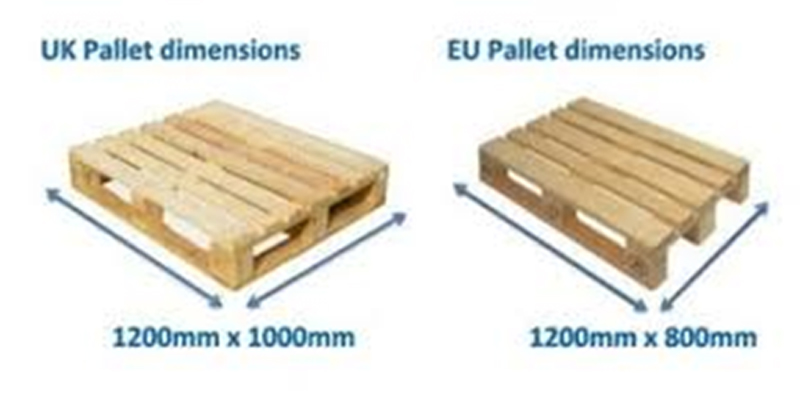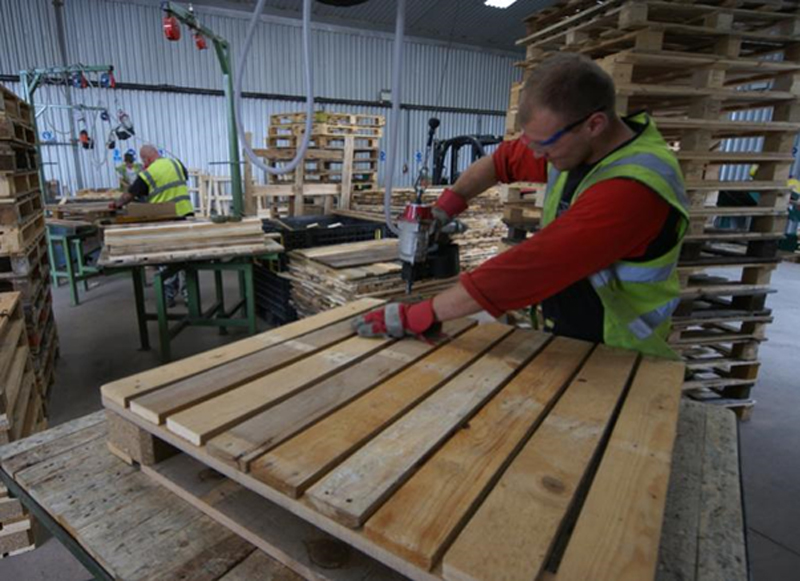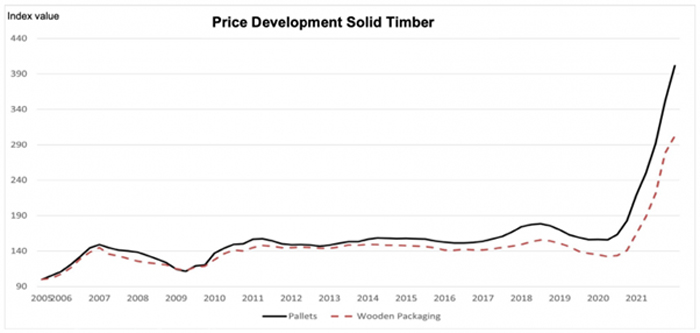Pallets – undeniably key to logistics. But which type, which method to acquire and what should you look out for?
At first glance, pallets may not appear to be that exciting, that critical or even that noticeable in the supply chain. But try to moving goods without them and you will see just how crucial they are to the world’s supply chains. Quite simply, without them global commerce would come to a grinding halt.
In this section of the Knowledge Centre we will provide you all you need to know about pallets; the different types, uses and of course costs! As always, as this is LOGISTO, we also provide a directory of pallet providers and suppliers to help give you confidence that you can service your pallet requirements, through one (or more) of our detailed providers.
So first up, what benefits do pallets provide?
Pallets have a basic primary function and that is to help transfer products in a safe and easy manner. Pallets are the principal interface with the unit load. Pallets protect the products, absorbing the stresses as the loads are moved by fork lift trucks and allow goods to be delivered in the same manner in which they left the shipper. A good quality pallet (and a well stacked one!) will allow a higher volume of products per pallet, which importantly, will allow the shipper to increase the volume of product per shipment, ultimately reducing shipping costs. There are also many other benefits that you might not think of with pallets, that are equally beneficial, namely:
Reduction in damages
Reduced risk of product contamination (particularly important in food/medicine)
Reduced risk of injury due to unbalanced or overloaded shipments
Reduction resource/cost - less pallet movements means a reduction in personnel and fuel costs for fork lift trucks
Are there different pallet types and which ones do I need?

Fundamentally, there are two different types of pallet; Standard and Euro. Of course, there are then many variations within these which determines the quality, both in terms of the material (wood or plastic) and the level of manufacture. Let’s start by addressing the difference between Euro and Standard:
The main difference between the Euro and the Standard size pallets is size. Standard (UK) pallets measure 1200 x 1000mm, which is the most commonly used pallet in the UK. The Euro pallet is slightly smaller, at 1200 x 800mm and is the recognised pallet size across Europe.
There is also a CP Pallet, which is predominantly used in the construction industry and are built for their inherent strength. They will vary in their size but are purpose built to accommodate the loads they need to hold, namely bricks, turf, barrels etc.
Material
Wood is the most common material for pallets and makes up the vast majority of pallets in circulation (90+%). They are significantly cheaper than plastic and can be interchangeable with other areas of the supply chain, without such a big concern that they will go missing (due to the significant difference in price vs. plastic).
It is important, now more than ever to ensure your supply chain reduces its impact on the environment. You will want your pallets to be to ISO quality standards and sourced from sustainable wood. A high-quality pallet will also ensure that the pallet is durable and can be used many (many) times in its lifetime, ensuring maximum return on the cost and for the environment.
Lifecycle and the environment
Whilst a well-constructed pallet will last many years, there will be a time when the pallet is no longer fit for its original purpose and has come to the end of its lifecycle. The good news is pallets don’t need to go to landfill. It is now very simple for wooden pallets to be refurbished and turned into new, shiny (ok, no shiny!) pallets, ready to move the worlds products once more. Any elements that remain and can’t be reused or repurposed are usually turned into wood chip and no element of wooden pallets should go to waste. Transforming and refurbishing old pallets can save over 43 million trees a year (Associated Pallets)! Each year more than 350 million pallets are recycled, and 87 percent of wood contained in pallets sent for recycling is used again in other pallets.
New vs used pallets?
So, you have decided that you need to purchase some pallets and your next question is ‘should I buy new or used (refurbished)?
At Logisto, we are big fans of both. On the one hand, new pallets will allow you full control over the specification and quality (and quantity) of the pallets you want, ensuring maximum return and durability for the purposes you require. On the other hand, used pallets are becoming second nature within the pallet networks around the world and refurbishment has become so good that the quality is now excellent. Also, they will often come at a 40%+ price reduction vs. new pallets.
Simply, many companies will decide on a blended mix, replenishing pallets with a mixture of new and refurbished.
Refurbishment
Of course, if you already own pallets that have become damaged or unusable, then you should consider getting them professionally fixed and returned.
There are a number of leading experts in the Logisto Directory that will be able to assist with just that. Please click here to head to the ‘Pallet refurbishment’ section of the directory.
The services detailed in the directory can save your business considerable costs and get your pallets ship shape and ready to go in no time!
(Picture: The Pallet Company)
Key considerations

Shortly we will provide an overview of pricing, but before we do that it is important to remember there are other key elements for consideration when determining the pallets you require:
Strength and size – what does the pallet need to hold?
Durability – how often will this be used and what do you need the lifecycle need to be?
Cleanliness – especially when buying refurbished pallets
Moisture content – this affects the quality and ultimately the longevity of the pallet
Weight – how heavy are the pallets? How easy is it for a warehouse operative to move?
When considering a pallet, you should always consider the above points and it isn’t solely about the lowest price. However, now we have mentioned it, what are the prices you can expect when purchasing pallets.
Price
Finally, the last big hurdle to overcome when purchasing pallets is price. Unfortunately, due to serious pressure on wood costs (and all raw materials in 2021) and an increase in demand over the same time, the cost of a pallet has seen dramatic increases across the world.

Whilst the pressures on the costs of pallets have not been favourable in recent years, the humble pallet can still be sourced at a cost that is not detrimental to your business vs. the benefits they provide. The below is a guide, taken from numerous sources in November 2021 and is the cost of a singular pallet. Of course, the more you buy, the less per pallet:
New: You can expect to pay approximately £5 for a small, basic wooden pallet, up to £15-20 for the Standard size, high quality pallet.
Used: For the Standard size, it will be in the region of £7-£10 per pallet.
The above is a guide and the price will vary based on the quality of the pallet and the quantity. For more up to date pricing with pallet suppliers, please contact some of our experts in the Logisto Logistics
The Future – pallets as a service
‘X as a service’ has for a long time been a big trend, from Software as a Service to ride-sharing apps such as Uber that offer transportation on demand. You may not think that pallets necessarily lend themselves to this, but you would be surprised!
Historically, companies have utilised the model of basic pallet purchase and retrieval. Whilst that works for numerous companies, in numerous countries, there is now another option to better manage pallets (and other equipment types) as part of the overall supply chain. Instead of simply buying pallets and managing them in-house, there are many companies that now outsource this management to third parties.
The advantage include:
- No CAPEX requirements, solely OPEX
- Industry-specific expertise is brought onboard
- Reduced overheads
- Complexity is removed from your business
- Allows you to focus on your core business activity
Whilst this is most likely only a good fit for mid/large companies, it should certainly be explored. The benefits of outsourcing to a 3rd Party and allowing your team to focus on the core business should not be underestimated. Within the Logisto Directory, we have provided details of pallet management experts, who we would recommend you have an initial conversation with, if this is something of interest.
We hope this article has been educational and informative on all things pallets. Of course, if you have any questions at all, then please do not hesitate to reach out to the LOGISTO Team here. We would love to hear from you.
Of course, if you have any queries about purchasing pallets or services to do with pallets, then please reach out to one of the experts listed in the directory.
Thank you,
The Logisto Team